Abby's Ohana Tea is a new artisnal tea from hawaii
If you want great aroma and flavor from the jungles of Hawaii, try Abby's Ohana Tea today by visiting the tea shop.

Regular tea is very often exposed to preservatives and chemicals like fertilizers, pesticides, fungicides, and herbicides during the growing and processing journey. These products can be associated with different physical problems -including cancer- and they may affect the way the tea looks and tastes.
In response to the demands of people not willing to consume regular tea or looking for a more natural infusion, the tea industry has developed a kind of production that does not involve any chemicals or pesticides during the production process. The result of this whole new method is called organic tea.
Organic tea means throughout the entire production, collection, or distribution process it hasn’t been in contact with chemical products. If the tea bags or packaging contain plastic at any level or if they have gone through a bleaching process, that tea cannot be considered fully organic.
Loose leaf tea has a smaller chance of coming into contact with these kinds of elements. However, you can now find organic tea bags in the stores that are labeled as “organic,” which has proven to be a reliable selling point over the years.
Organic tea is considered to be better than regular tea, not only because of how it tastes but also because it is good for you and for the environment, because producers must follow strict rules for conserving biodiversity and cleanliness. They need to use organic products for pest control, as well as recyclable packaging materials.
As with any organic food, the absence of synthetic pesticides or herbicides on the leaves can be related to a reduced risk of cancer and other health benefits when associated with a healthier lifestyle.
Moreover, tea is known for the concentration of antioxidants. White tea has the most antioxidants since it is the least processed variety of tea. In other words, it is considered the healthiest tea, followed by jasmine tea, green tea, and finally, black tea.
It is ok to drink tea every day but a moderate intake is recommended. Drinking too much could lead to negative side effects associated with caffeine and tannin contents. Side effects may include anxiety, headaches, digestive issues, and disrupted sleep patterns. You can drink up to three to four cups (710-950 ml) of tea daily without any real health dangers. *See medical advice disclaimer below.
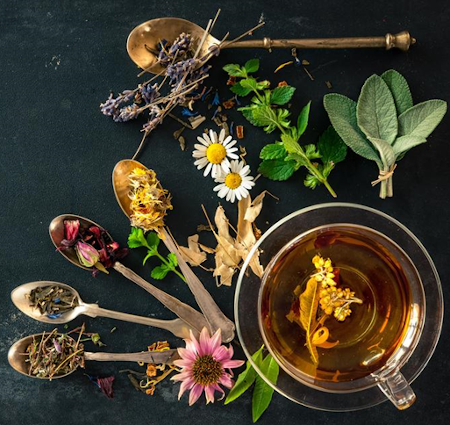
Like any other kind of tea, organic tea has varying quantities of caffeine as this component occurs naturally in the tea plant, the Camellia sinensis. Hotter water and longer steeping time may draw out part of the caffeine, while cooler water and shorter steeping time may extract less caffeine.
However, it is known that the body absorption of caffeine from tea is slower than caffeine from coffee promoting a longer period of alertness without an abrupt starting or ending.
Because of the caffeine, drinking unsweet tea is not the same as drinking water, as it may affect your hydration if you drink a lot. Once ingested, caffeine makes it to your liver where it is broken down into various compounds that can affect your organs functioning.
The dehydration comes from the caffeine’s diuretic effect on your kidneys that may cause your body to produce more urine. It does this by increasing the blood flow to your kidneys which encourages them to flush out more water. If you urinate more frequently, your hydration may be affected.
Depending on the variety of tea, it may contain more or fewer caffeine levels. Black tea is the highest in caffeine since it has the highest concentration with an average of 37 milligrams. Herbal teas such as chamomile, ginger, and peppermint do not have caffeine because they are not made of Camellia Sinensis plant leaves.
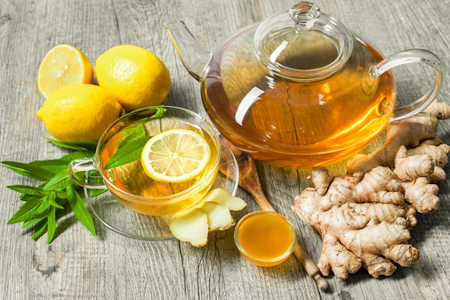
From the true teas, green tea contains less caffeine than black tea. Matcha green tea may contain up to 130 milligrams of caffeine.
Drinking tea is good for your health but too much of it can be bad for your kidneys leading to kidney stones due to the presence of oxalate. When it comes to kidney support, the best choice is green tea. In 2011, researchers reported that this kind of tea helped prevent kidney damage in lab animals given gentamicin, an antibiotic that may induce damage to the kidneys.
Matcha is a variety of green tea that is made of young leaves that are ground into a bright green powder and then whisked with hot water, so you drink whole tea leaves. It is different from regular green tea where leaves are infused in water and then removed, taking away some of the best nutrients.
The matcha leaves come from shrubs that are grown in the shade, which helps increase the chlorophyll amount in the leaves making them bright green and full of nutrients. Leaves are picked by hand and stems and veins are removed. The finest matcha tea comes from Japan, where they have been grown for centuries.

There are many signs of good quality tea, and they are related to the appearance, the aroma, the touch, and the taste.
Appearance: The leaves are best when unbroken. Broken leaves create a bitter taste and are also a sign of machine-harvested tea. You should also pay attention to the leaves when they are dry and when they are wet since this speaks about the oxidation process.
When you brew green tea, it should become close to the color it was at the moment of collection. Old leaves will turn the water brown. On the other hand, black tea should be bright reddish-gold and you should notice a ring in the cup.
Aroma: The dry tea always has an obvious aroma. Green tea should have a light, fresh fragrance, while black tea should have a sweet, floral fragrance, and the oolongs smell ranges from peach to osmanthus flowers. In scented teas, the aroma remains alive over multiple infusions while poor-quality teas lose their odor quickly.
Touch: The tea leaves may be smooth or coarse. Good quality tea leaves should not crumble easily. If it does, it means that it is too old, or has been baked for too long.
Taste: Good tea tastes fresh, has a sweet aftertaste, and should feel slippery as it goes down your throat. The aftertaste tends to linger for a long time.
Considering all these qualities, the list of the best tea brands in 2020 has been published. The best tea was considered to be Tetley Tea Brands, which is the largest tea company in the UK and the second world’s largest distributor offering a wide variety of flavors and products.
The top 5 list of the best tea brands is completed by the American Celestial Seasonings, Yorkshire Tea, Bigelow Tea Brands, and the European Yogi Tea.
We suggest you give Abby’s Ohana Tea a try. They are an up and coming brand with a tea farm in Hawaii. Hawaii’s climate and high altitude are perfect for producing some of the best teas in the world.
If you want great aroma and flavor from the jungles of Hawaii, try Abby's Ohana Tea today by visiting the tea shop.
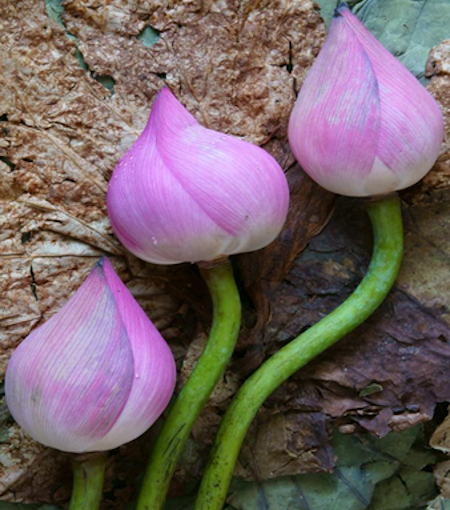
Lotus leaf tea is known for the benefits it has to the spleen and stomach. It has also been recommended as a slimming drug in China. It may help lose weight and dispel excess fat. It is commonly recommended for people who gain weight from eating too much greasy food.
The recommended dose of lotus leaf tea is three to four cups of tea a day and its effects are clearer if taken on an empty stomach. It can also help relieve constipation which will also help you lose weight more efficiently.
Rooibos tea -the so-called red tea- is grown mainly in Africa and does not contain any leaves from the Camellia sinensis plant. Therefore, it is not considered a true tea and it is the less common variety.
Rooibos is well known for its health benefits and delicate, sweet, and aromatic flavor. Antioxidants, enzymes, and chemical compounds good for your skin can be found in rooibos tea that helps reduce inflammation preventing serious illness.
The taste is sweet and nutty, very often compared to hibiscus tea. It may have hints of caramel, vanilla, and smoky essence. This kind of tea is caffeine-free which converts to a proper beverage for any time of the day.
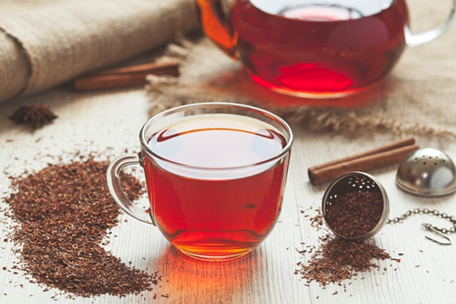
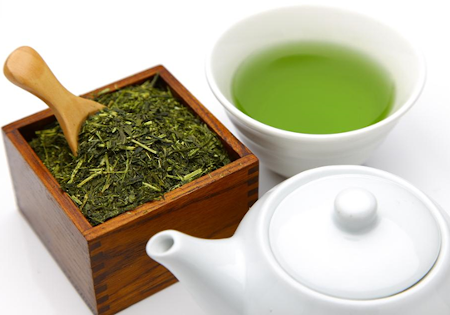
If you drink green tea every day, you may find benefits to lose weight and reduce your risk of some diseases like diabetes, heart disease, and cancer. An optimal ingest is three to five cups per day.
As it contains some amount of caffeine, green tea is not recommended to drink at night before going to bed because it might disturb your sleep. The presence of caffeine and the amino acid L-Theanine can make you awake and promote better concentration.
The best time to drink green tea is at least two hours before going to bed. Remember not to drink it too early in the morning, and you can also use it between meals and before exercise, as it can help burn more fat.
Despite the benefits of the tea, there are some toxins that can be found in a cup of tea. For example, paper tea bags have epichlorohydrin, which is used to keep the bags from breaking. This chemical can leach when exposed to hot water with potential risks to your health. Other tea bags are made of rayon, thermoplastic, polypropylene, or polyethylene terephthalate (PET), with other potential risks associated.

Regular tea itself may contain other toxins derived from the use of unsafe pesticides and heavy metals present in contaminated soil that may be found in both organic and regular teas.
The safest teas to drink are organic tea.China is the world’s largest producer of tea and also the biggest user of pesticides. Excessive pesticide use may damage the tea plantation environment polluting the air, soil, and water. Organic tea from China is safer than regular tea from the region.
If you are looking for safe tea brands, you should consider Art of Tea’s organic green tea loose, as well as Gaia, which makes safe tea with no plastics in their teabags. Numi Organic Tea is toxin-free and it comes in compostable hemp tea bags that are oxygen-bleached. Other brands like Choice Organic Teas come in unbleached abaca fibers and do not use plastics.
If you are consuming bag tea, the safest are the organic ones. If not organic, toxic pesticides can end up in your cup and then, in your body. Loose-leaf organic tea is the safest option.
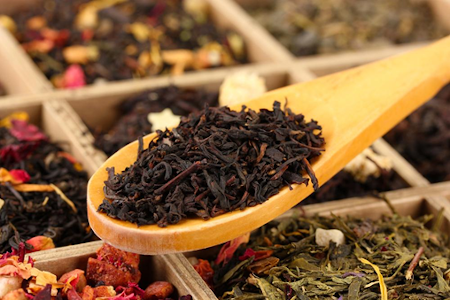
Medicinal tea can also be found in toxin-free, compostable bags that are made from hemp and wood pulp. The whitening process uses oxygen and peroxide, and they are sealed with staples and cotton string.

The Irish and English breakfast teas are very popular black tea blends. Originally, the English breakfast tea was made with Chinese Keemun tea and then it changed to include Assam. Both blends were created 200 years ago and became a staple in households.
In England, tea culture started before India started producing teas. As tea became more available and affordable, breakfast blends started to include different types of tea.
The main difference between the Irish and the English breakfast tea is in strength. Irish Breakfast tea is usually stronger than English.
Many English breakfast blends contain two or more different teas, while Irish Breakfast is likely to have up to two.
Some Irish drink their tea really dark and most of the time, they add milk with no lemon or other fancy flavorings. Just a drop of milk and some sugar helps reduce the bitterness.
DISCLAIMER: THIS WEBSITE DOES NOT PROVIDE MEDICAL ADVICE
The information, including but not limited to, text, graphics, images and other material contained on this website are for informational purposes only. No material on this site is intended to be a substitute for professional medical advice, diagnosis or treatment. Always seek the advice of your physician or other qualified health care provider with any questions you may have regarding a medical condition or treatment and before undertaking a new health care regimen, and never disregard professional medical advice or delay in seeking it because of something you have read on this website.